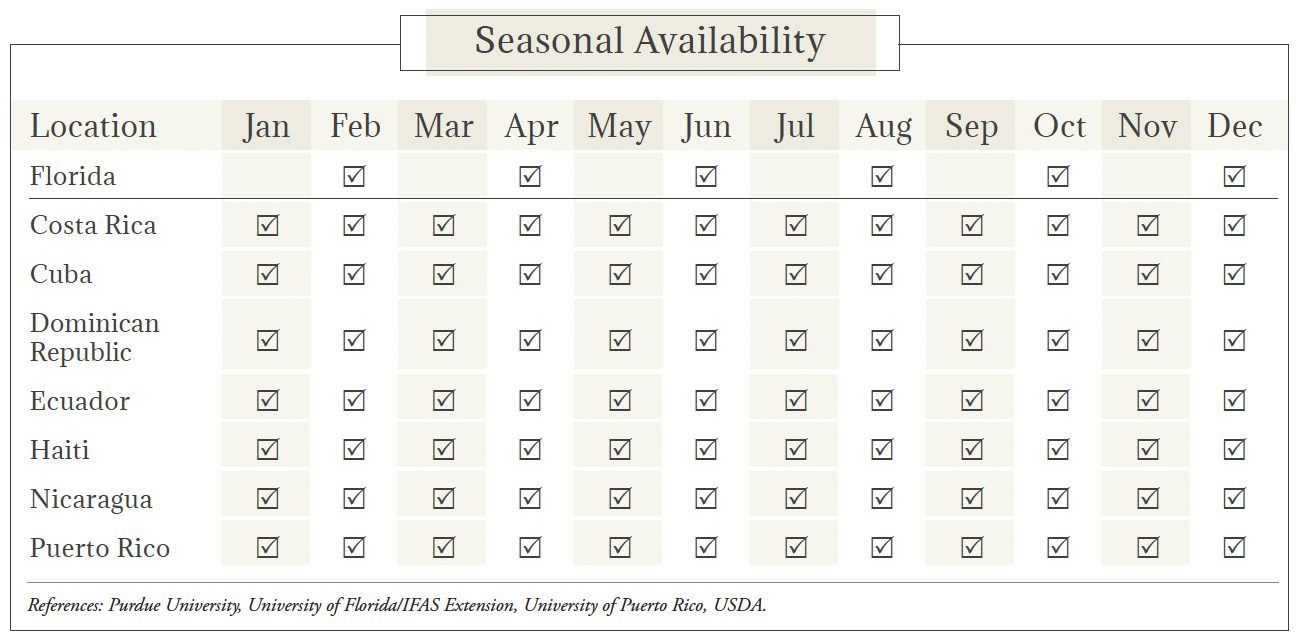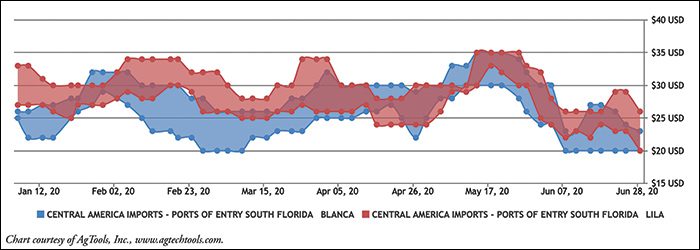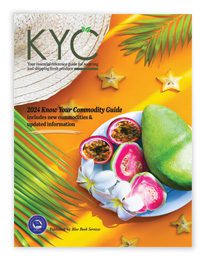Malanga Market Summary

Image: Halit Omer/Shutterstock.com
Malanga Market Overview
Malanga is a tuber related to the taro root, also known as yautia, tannia, tanier, and old coco yam. This dense root vegetable is widely grown in the tropics including Cuba, Costa Rica, Ecuador, Dominican Republic, and Nicaragua. It is grown on a smaller scale in South Florida to meet the demand of Latin American consumers in the United States.Types & Varieties of Malanga
Malanga plants, which can grow up to 5 feet tall, are characterized by large, elephant ear-shaped leaves. The edible root or cormel forms at the base of the plant. The root vegetable varies in size, ranging between half a pound to 2 pounds. Covered in a rough, brown, hairy skin, the tuber resembles a sweet potato. Its flesh can vary from pink to yellow to beige. The most common U.S. variety is Malanga Blanca; others include Lila, Coco, Eddo (Tarro), and Amarilla. Malanga is typically peeled before being cooked. Although its consistency is fairly thick and creamy like a potato, malanga has a bolder, earthier flavor with hints of nut, depending on the variety. Much like potatoes, the tuber can be baked, boiled, grilled, stewed, fried, sliced, or mashed. It can also be milled into flour or ground into paste and used as a thickener in soups, stews, and other dishes.
The Cultivation of Malanga
Malanga grows best in full sun and temperatures above 68°F. The plant thrives in damp but well-drained soil. In the United States, the tubers have been successfully grown in marl (soil consisting of clay and lime) and rockland soil in southern areas of Florida. However, the plant can be grown in various types of soil as long as there is sufficient water and drainage. Malanga can be cultivated from the head of the plant, the entire tuber, or a piece of the tuber. It should be planted 3 to 5 inches deep in rows spaced at least 72 inches apart. The crop typically takes 10 to 12 months to mature, depending on soil type. When the plant leaves begin to dry out and wither, it is time to harvest tubers. The plant is pulled from the soil by hand, roots and all.Pests & Diseases Affecting Malanga
Malanga is vulnerable to a number of pests and diseases. A primary pest is the daiprepes root weevil. The larvae feed on the plant, causing damage to the tuber. Other pests include whiteflies, thrips, and salt marsh caterpillars. The latter, however, rarely cause severe damage to crops. Prevalent diseases include bacterial leaf spot and dasheen mosaic; the latter is caused by the dasheen mosaic virus. Widespread in Florida, the virus appears in the vast majority of malanga crops, impacting up to 90 percent of plants in some fields and can severely reduce yields.



